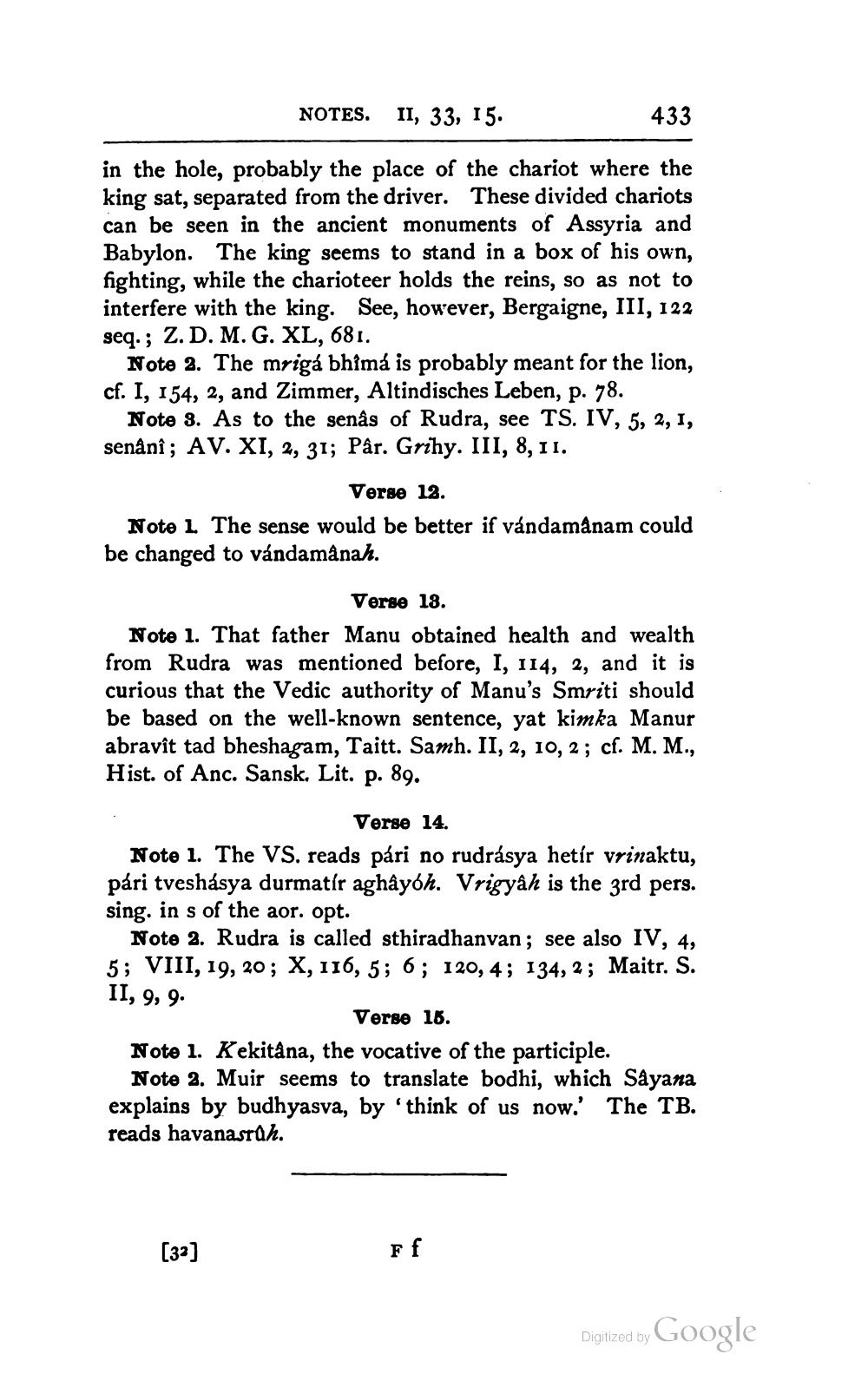________________
NOTES. II, 33, 15.
433
in the hole, probably the place of the chariot where the king sat, separated from the driver. These divided chariots can be seen in the ancient monuments of Assyria and Babylon. The king seems to stand in a box of his own, fighting, while the charioteer holds the reins, so as not to interfere with the king. See, however, Bergaigne, III, 122 seq.; Z. D. M.G. XL, 681.
Note 2. The mriga bhîmá is probably meant for the lion, cf. I, 154, 2, and Zimmer, Altindisches Leben, p. 78.
Note 3. As to the senâs of Rudra, see TS. IV, 5, 2, 1, senânî; AV. XI, 2, 31; Pår. Grihy. III, 8, 11.
Verse 12. Note 1 The sense would be better if vandamanam could be changed to vándamanah.
Verse 18. Note 1. That father Manu obtained health and wealth from Rudra was mentioned before, I, 114, 2, and it is curious that the Vedic authority of Manu's Smriti should be based on the well-known sentence, yat kimka Manur abravît tad bheshagam, Taitt. Samh. II, 2, 10, 2; cf. M. M., Hist. of Anc. Sansk, Lit. p. 89.
Verse 14. Note 1. The VS. reads pári no rudrásya hetír vrinaktu, pári tveshásya durmatir aghâyóh. Vrigyâh is the 3rd pers. sing. in s of the aor. opt.
Note 2. Rudra is called sthiradhanvan; see also IV, 4, 5; VIII, 19, 20; X, 116, 5; 6; 120, 4; 134, 2; Maitr. S.
II, 9, 9.
Verse 10. Note 1. Kekitâna, the vocative of the participle.
Note 2. Muir seems to translate bodhi, which Sayana explains by budhyasva, by 'think of us now. The TB. reads havanasrah.
[32]
Digitized by
Digitized by Google




